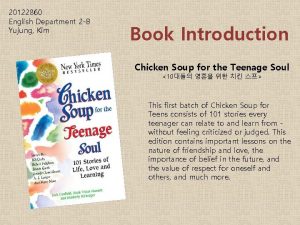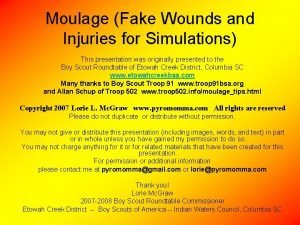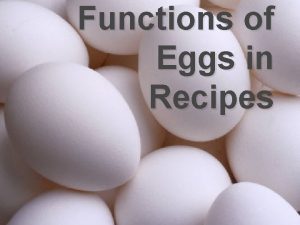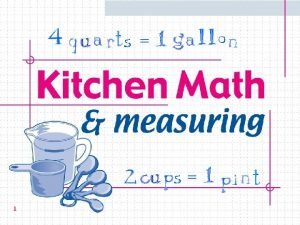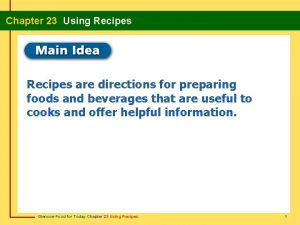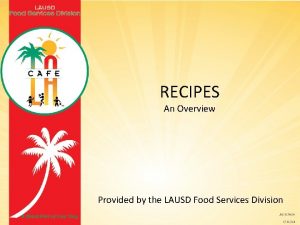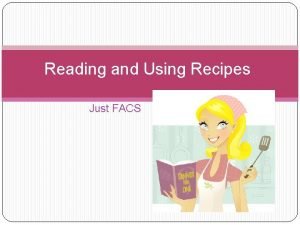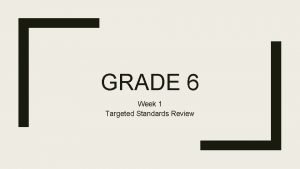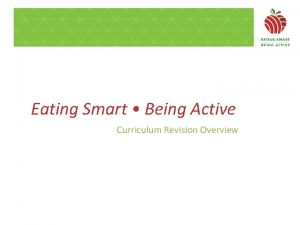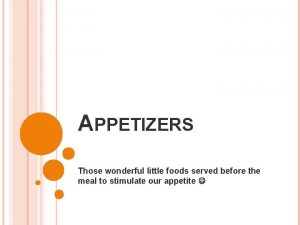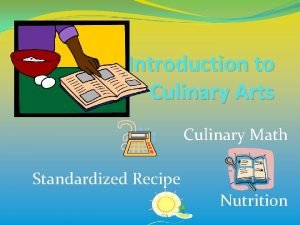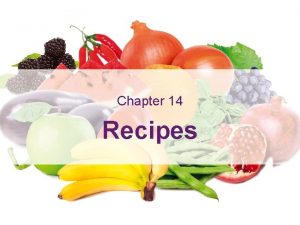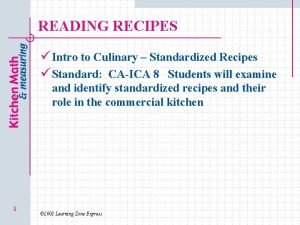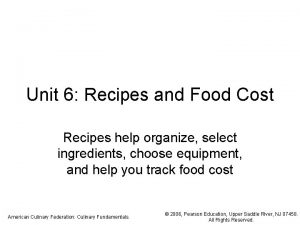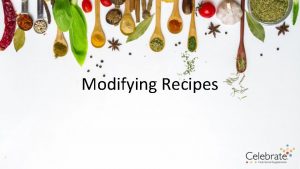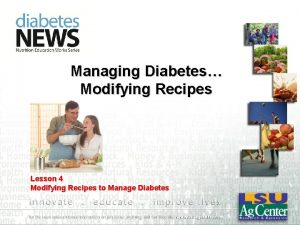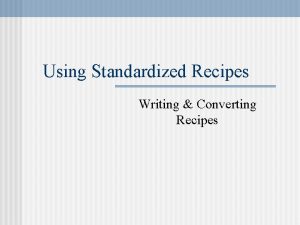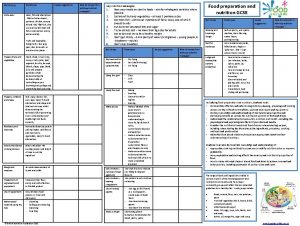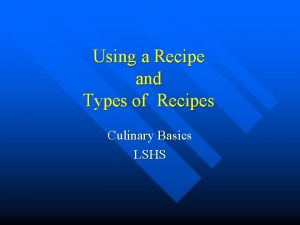Following a Recipe Recipes A recipe is a













- Slides: 13

Following a Recipe

Recipes A recipe is a list of ingredients and directions for preparing a specific food. Not all recipes are written in the same way. Some are easier to follow than others. A recipe in the standard format is a list of all the ingredients in order of use and step-by-step directions for preparing the food. A recipe in narrative format is a paragraph description of the steps and ingredients order of use. This format is sometimes used in newspapers and magazines because it takes up less space.

Things to look for: Does the recipe… • List the necessary ingredients. • State the amount of each ingredient. • Provide step-by-step instructions on how to combine the ingredients. • Mention the sizes of pans that will be needed. • Specify the cooking time and temperature. • Estimate the yield, or the number of servings.

When following a recipe: You should… 1. Read through the entire recipe. 2. Make sure that you understand all the terms and abbreviations. 3. Assemble all the ingredients and equipment before you start. 4. Do any necessary preparation, such as turning on the oven or greasing the pan.

Parts of a Recipe • Ingredients: foods used in the recipe • Amount of each ingredient: amount/measurement of each ingredient used in the recipe • Directions: usually listed or numbered in order. Tells you how and when to use the ingredients and assemble the dish • Cooking Time: how long to cook the food, should be specific • Yield: number of servings the recipe will make

The language of a recipe: Recipes have their own special language. To be able to follow them, you need to know some common cooking terms and abbreviations.

Understanding Abbreviations Teaspoon…tsp (or t. ) Tablespoon…tbsp. (or T. ) Cup…c. (or C. ) Pint…pt. Quart…qt. Gallon…gal. Ounce…oz. Pound…lb. Degrees Fahrenheit… F Milliliter…m. L Liter…L Gram…g Degrees Celsius… C

Cooking Terms • Bake: cook in an oven in an uncovered container • Boil: heat a liquid on a cook top at a high temperature. Bubbles should constantly rise and break surface. • Braise: cooking technique that combines browning and simmering. Brown food in a small amount of fat. Then, add a little liquid and simmer in a uncovered container. • Broil: cook by direct heat by placing food under the heat source. • Brown: cook in fat until surface of food turns brown.

• Cook: prepare food for eating using heat • Deep fry: cook in enough hot fat to cover the food. • Dry-heat cooking: cook foods without liquids. • Fry: cook in fat or oil in pan • Grill: cook by direct heat by placing the food over the heat sources. Heat source can be gas, electric, charcoal or wood. • Microwave: cook in a microwave oven • Moist-heat cooking: cook food by adding water or other liquids. • Panfry: cook in enough hot fat to cover the food half way.

• Poach: cook in liquid at a low temperature. • Roast: cook uncovered in an oven without liquid. • Simmer: cook in liquid at a temperature just below boiling. Bubbles form only along the edges of the pan and do not break the surface. • Steam: cook in covered container on a rack above liquid that is boiling. • Stew: cook in enough liquid for ingredients to float freely. • Stir-Fry: cook evenly cut pieces of food in a small amount of fat, stirring frequently.

Identifying Healthful Ingredients Grains – look for • Whole grain or whole wheat • Less processed (rolled oats rather than instant oatmeal) Vegetable – look for • Vegetables in season or frozen • Canned labeled low sodium Fruit – look for • Fruits in season or frozen • Canned without added sugar Diary – look for • Low fat, fat free milk products or soy, rice, almond milks • Cheeses lower in fat (parmesan or feta)

Protein – look for • Cuts of meats that include round or loin • Ground beef, turkey or chicken that is labeled 90% (or grader) lean • Skinless poultry cuts • Seafood such as salmon, cod, trout, herring • Beans, peas, lentils or tofu as a replacement for meat/poultry • Nuts and seeds as a replacement for poultry

Oils – look for • Olive or grape seed oils Sugars – look for naturally occurring sugars • honey • maple syrups
 Yujung recipes
Yujung recipes How to make fake skin with gelatin
How to make fake skin with gelatin What is emulsifier in egg
What is emulsifier in egg Abbreviations and measuring techniques worksheet answers
Abbreviations and measuring techniques worksheet answers Chapter 23 using recipes
Chapter 23 using recipes Lausd food services division
Lausd food services division Recipe modification
Recipe modification Insect bite
Insect bite Facs recipes
Facs recipes Chris and jenny are comparing two similar punch recipes
Chris and jenny are comparing two similar punch recipes Eating smart being active recipes
Eating smart being active recipes Small open faced sandwiches served as appetizer
Small open faced sandwiches served as appetizer Parts of a standardized recipe
Parts of a standardized recipe Standardized menu
Standardized menu
